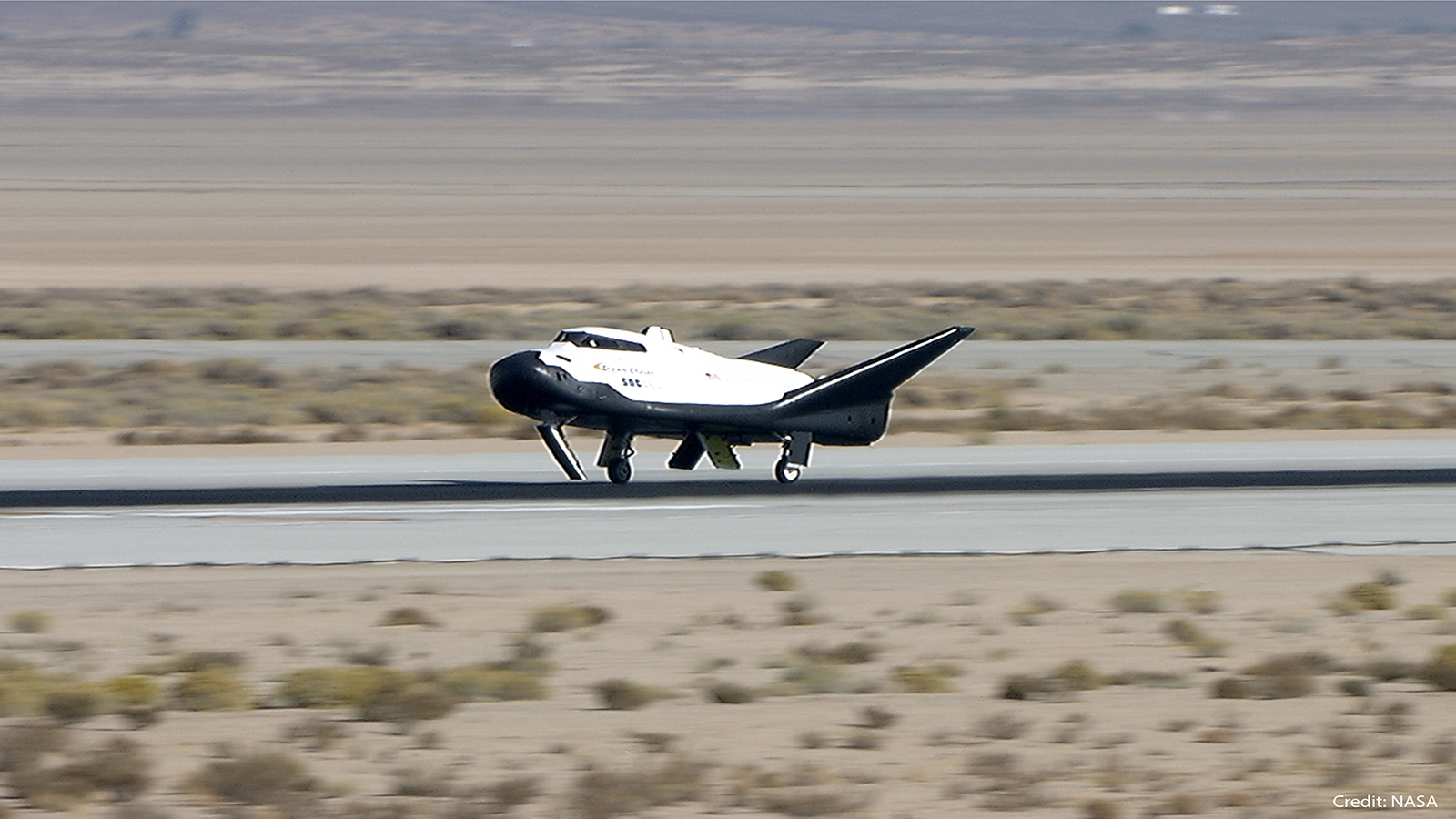Stay Up to Date
Submit your email address to receive the latest industry and Aerospace America news.
Mini-shuttle will compete to launch astronauts too
AIAA SCITECH FORUM, SAN DIEGO –– Steve Lindsey distinctly remembers being “bummed” when Sierra Nevada Corp.’s design for a reusable spaceplane lost out on a 2014 NASA contract to carry astronauts to and from the International Space Station, prompting the Colorado company to pivot to building a cargo version of Dream Chaser. But eight years later, he see things differently.
If all goes as planned, the first flight of a cargo Dream Chaser, named Tenacity, aboard a Vulcan Centaur rocket from United Launch Alliance would coincide with a surge of companies looking to build and operate their own space stations in low-Earth orbit as follow-ons to ISS. Those stations will require vehicles to ferry supplies and visitors.
SNC’s subsidiary Sierra Space, which as of its creation last April oversees the Dream Chaser program, is targeting a three-month window between November and February 2023 for Tenacity’s inaugural flight, the first of six cargo deliveries planned under a NASA cargo contract awarded after the Commercial Crew disappointment in 2014. In parallel, Sierra is refining the design for a crew variant, now scheduled to debut in the mid-2020s. I spoke to Lindsey about the company’s plans in the run-up to SciTech and during the event.
“I got to thinking about it and said, ‘You know, it’s almost better to do cargo first,” recalled Lindsey, the Sierra senior vice president who oversees Dream Chaser development. “Because of the commonality between the cargo and crewed version, we’ll have a flight-proven vehicle” before the crewed variant carries humans. “From a risk standpoint, that makes me feel a lot better actually.”
Sierra plans to build a fleet of between 10 and 15 Dream Chasers by 2030, although the breakdown between cargo and crew variants is still to be determined. Along with the six cargo flights for NASA, plans call for cargo and crew Dream Chasers to ferry supplies and passengers to the Orbital Reef space station that Sierra and Blue Origin plan to erect in low-Earth orbit by 2027.
But first, the Dream Chaser cargo design has to reach space. As of January, the company was conducting load testing with Tenacity at the company’s Louisville, Colorado facility. Engineers attach the spaceplane to scaffolding, and pistons on either side apply forces to simulate the loads that Dream Chasers would experience during different phases of flight.
“Our big milestone that we’re really working toward is late summer,” between June and August, Lindsey said, when Tenacity and its Shooting Star cargo module that would attach to the back of the spaceplane are scheduled to be shipped to Ohio for thermal vacuum tests at NASA’s Neil A. Armstrong Test Facility, formerly named Plum Brook. Those tests are scheduled to last between three and four months, partly because Tenacity is the first production vehicle, said Lindsey.
“We’ll be a heck of a lot faster” building and testing subsequent planes, he said.
And that won’t be the only difference. Lindsey expects Tenacity to be “the heaviest vehicle we fly,” similar to how the space shuttle Columbia had more mass than subsequent orbiters.
Before a vehicle flies for the first time, “you often have to add mass to deal with unknowns in terms of loads and vibrations, or you add mass to deal with the uncertainties in your analysis.”
Sierra’s engineers could apply these and other lessons from Tenacity to the Dream Chaser crewed variant, he says, which might someday fly NASA astronauts after all. The agency in October issued a request for information for the next round of crew transportation services to ISS, a follow-on to the 2014 contract that Dream Chaser lost out on.
About cat hofacker
Cat helps guide our coverage and keeps production of the print magazine on schedule. She became associate editor in 2021 after two years as our staff reporter. Cat joined us in 2019 after covering the 2018 congressional midterm elections as an intern for USA Today.
Related Posts
Stay Up to Date
Submit your email address to receive the latest industry and Aerospace America news.




